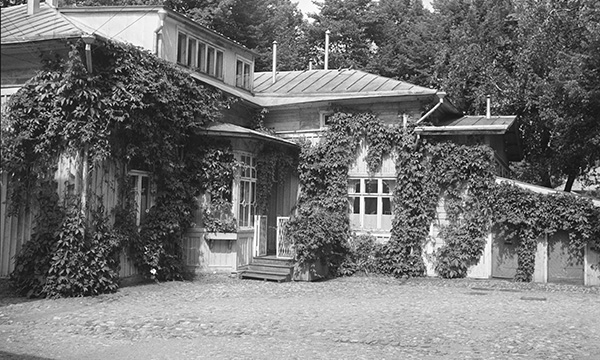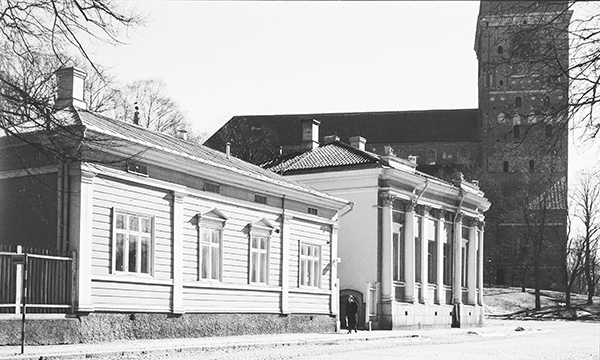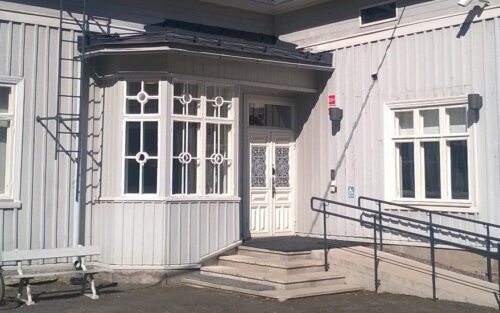Annexe to the Faculty of Theology
Biskopsgatan 16
Construction years: 1833
The site of the present-day Theologicum also contains an annexe to the Faculty of Theology – Teologiska annexet – which was built in 1833 as the residence of Carl Procopé, an assistant judge and justice at the Court of Appeal. The angular, single-storey wooden house represents the minimalist Empire style. The main façade looking onto Piispankatu is divided into three pilaster groups and decorated with elements such as cornice strips and windows in three different styles.
The design for the building was drawn up in 1831 when the plot was still in the ownership of Pehr Adolf von Bonsdorff, a professor of chemistry. His father, Gabriel von Bonsdorff, designed the plot, and he is also believed to have been responsible for the design of the wooden corner building towards Piispankatu. The Board of Works did not approve the wooden houses designed for the plot because the contract stated that only stone buildings could be constructed in that location. However, von Bonsdorff appealed the decision. The county governor upheld the appeal, but von Bonsdorff never began construction.


In summer 1833, Carl Procopé applied for a permit to build two wooden corner buildings. Procopé appears to have been a somewhat impatient builder, as the houses were constructed in 1833, before the building permit was granted.
The new residential building on Piispankatu had seven rooms, an entrance hall, a kitchen and some smaller rooms. According to a fire insurance policy dated 1840, the building was planked and oil-painted at that time.
The second wooden building – the outhouse extended in 1840 – served as a baking room, entrance hall, chamber, woodshed, carriage shed, horse stables and barn.
In the second half of the 19th century, the property changed owners several times until Conrad Spoof, a consul, and his wife, Jenny, bought it in 1893. Under their ownership, the building’s façade was altered, the open verandah was extended, and a couple of extensions were constructed towards the yard. The house was also modernised with the installation of electricity cables, water pipes and sewers.
Conrad Spoof left the building to the Åbo Akademi Foundation in his will, and when he died in 1922, his widow, Jenny, moved out of the main building (now known as Theologicum) and into the additional building. The building was designed by Erik Bryggman, and it was split into two separate apartments in 1938. The apartment on the Piispankatu side was rented by journalist Einar Holmberg and his wife, Alfhild, until 1960, and the apartment facing the yard was rented by Åbo Akademi’s first accountant, Anna Bäckström (until her death in 1942), and her sister. Bäckström and Alfhild Holmberg are important people in the history of Åbo Akademi. They took the initiative to arrange popular science lectures, which began in 1903, thereby contributing to the establishment of Åbo Akademi in 1919.
The building in the north-east corner of the plot was demolished in 1934 to make way for the modern Åbo Akademi Book Tower, which was completed in autumn 1935. At the start of the 1960s, Teologiska annexet was a hall of residence for theology students, and since 1966, the premises have served as teaching facilities for practical theology. At that time, the secondary extensions in the courtyard were demolished, and the attic was converted into offices.
Teologiska annexet underwent extensive reconstruction and a full renovation in 2012. Since then, the building has been used to teach systematic theology and ecclesiastical history.


